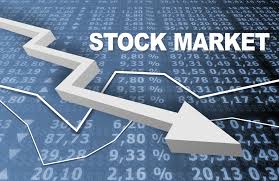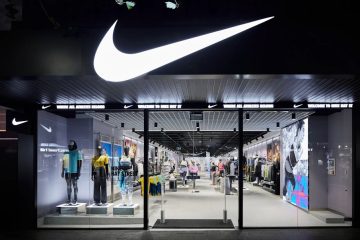FAANG Tech Stocks Are No Bargain. Here’s Why

In this year’s surging stock market, the big news is the spectacular performance of a clutch of tech titans, whose feats have won them a popular nickname: the FAANGs. The awesome rise of the FAANGs also creates a frightening study in over-valuation. It’s impossible to predict how much the FAANGs will fare in the years ahead, but we can calculate how high they must jump to enrich investors. And this year’s run-up has lifted the bar from extremely difficult to Mission: Impossible.
The FAANGs comprise five of the tech mega-caps. Facebook, Apple, Amazon, Netflix, and Google parent Alphabet. Since the start of 2016, they’ve driven the Nasdaq to record after record. As a group, accounted for well over 30% of the strong rise in the S&P 500. To assess whether the FAANGs remain a buy, as most Wall Street pundits claim, let’s treat them as one big company that we’ll call FAANG Inc. When the year began, the combined market cap of the Big 5 stood at $ 1.842 trillion. Since then, their value has jumped $ 536 billion to $ 2.388 trillion. That 29.7% increase in over five and a half months is equivalent to a 65% annualized return.
Even their fans wouldn’t deny that the FAANGs are a risky bunch. It’s reasonable to reckon that investors would want an outsized return of around 10% given that while their prospects look great today, the future of any tech high-flyer is extremely hard to foresee. But getting to double-digit gains just got a lot tougher due to their recent breakout. At the end of 2016, the PE multiple of our FAANG Inc was a lofty 23. By mid-June, it had jumped to 30. It isn’t reassuring that FAANG Inc earned $ 80.2 billion, based on the last four quarters of trailing profits, at the start of 2017, and just $ 100 million more, $ 80.3 billion, by mid-2017. Since profits barely grew, FAANG Inc became almost 30% pricier in less than six months, based on its newly expanded PE. To be sure, FAANG Inc isn’t quite as expensive as when its shares peaked around June 8. But the 4% of so decline since then has lowered the PE only slightly, from 31 to 30.
Naturally, the optimists claim that FAANG Inc is still a deal, because its members will prove a fantastic fount of earnings for years to come. We’ll put put specific numbers on that bluebird view by creating a simple model that involves moving a few decimal points: Let’s say that FAANG Inc’s share price is $ 24 (based on $ 24 trillion valuation) and that it earns 80 cents (that’s the $ 80 billion, many decimal points to the left), so it’s selling at the FAANGs combined PE of 30. FAANG Inc pays a tiny dividend of just .5%; in fact, Apple is the only stock in the group pays any dividend. To achieve our target of 10%, the stock price needs to grow at 9.5% a year, providing capital gains, that combined with the tiny dividend, total 10%.
But earnings probably need to increase faster than 9.5%, for a basic reason: It’s likely that FAANG Inc’s multiple will decline over time. Everyone from retirees to insurance companies are looking at the FAANGs as long-term investments. So for our example, what counts is where those earnings finish in a decade. But by 2026, the best bet is that FAANG Inc’s PE drops substantially. That’s what happens when the jackrabbit sprint of youthful tech companies inevitably slows. We’ll predict that in 10 years, FAANG Inc will sell at a PE of 25, down from 30 but still substantial, and still forecasting well above average profit performance.
To achieve our 9.5% annual capital gain, FAANG Inc’s shares need to rise 147%, to from $ 24 to $ 59. But keep in mind that the multiple will fall, so the FAANGs will need proportionately more profits to support the same share price. At a PE of 25, earnings will need to almost triple from 80 cents to $ 2.36. That would require an annual earnings increases of 11.2% a year.
That’s extremely unlikely to happen. The FAANGs are mainly one-product companies. Google and Facebook rely almost entirely on advertising. Apple is heavily dependent on a single product, the iPhone. Netflix streams video entertainment and Amazon is the king of online retailing. All of them dominate their businesses. But dominant positions are extremely vulnerable. When businesses are super profitable—the main theme of FAANG Inc—they are a magnet for new rivals.
“Over time, they’re chipped away by competitors,” say Jack Ciesielski, author of The Analyst’s Accounting Observer, a research service and blog.
All of the FAANGs are investing in new products and services, from watches (Apple), to TV series production (Netflix) to artificial intelligence (Facebook), to venture capital (Google). The danger is that these new ventures won’t come close to balancing the erosion in pricing power and market share in their principal franchises. Their task was difficult before the FAANG Inc went on an historic tear. Now, the math is forbidding, making the FAANGs a glamorous, fabulously overpriced place that bargain hunters should avoid.










